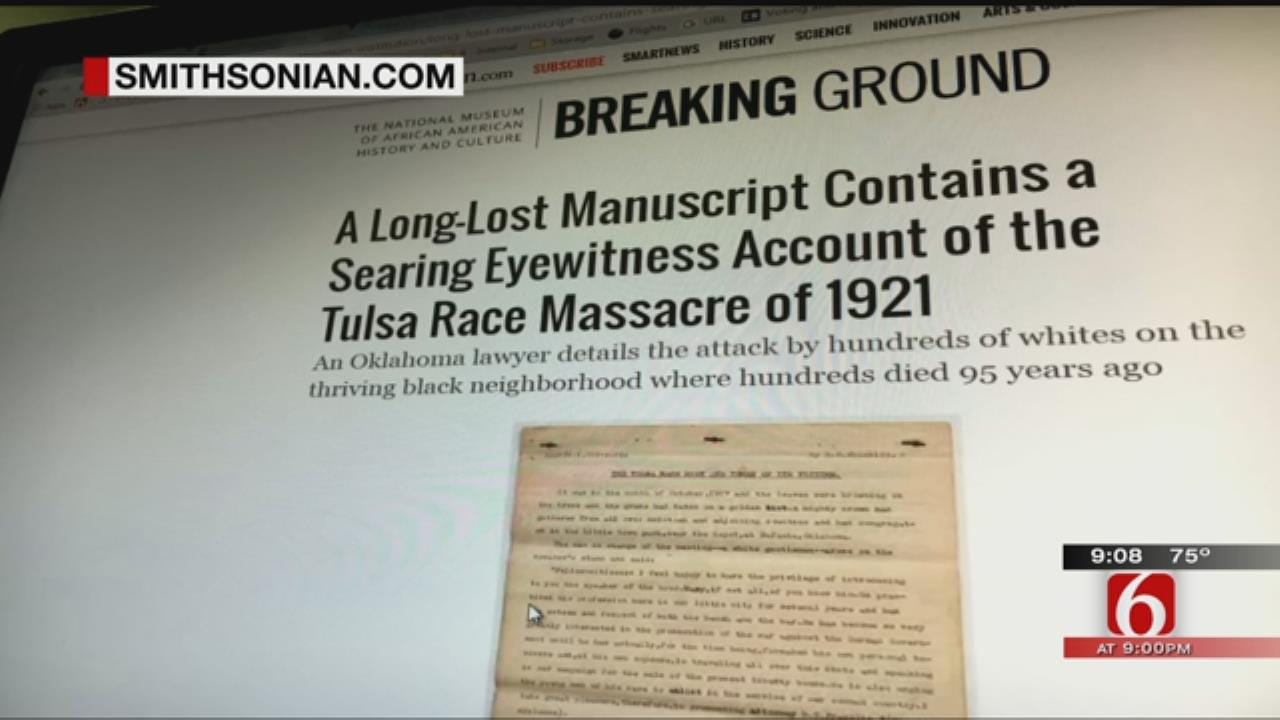New Document Could Answer Lingering Questions About Tulsa Race Riot
<p>Ninety-five years after the Tulsa Race Riot, new discoveries are emerging, and a new document could settle one significant but disputed claim.</p>Tuesday, May 31st 2016, 11:15 pm
On the anniversary of the Tulsa Race Riot, U.S. Senator James Lankford walked through the Greenwood District in downtown Tulsa, which was known as "Black Wall Street" back in 1921.
Tulsa's Race Riot lasted 16 hours and was the largest in history. It's described as a violent clash between whites and blacks, ending with hundreds of lives lost and a community in ruins.
Lankford said it is important to remember that somber time in Tulsa history, but also to recognize the strength of the survivors.
"They rebuilt the Greenwood area after they had literally been burnt to the ground, and the people that burned them to the ground were still down the street. But, they chose to stay anyway. That's a tenacious message," Lankford said.
Ninety-five years later, new discoveries are emerging about the riot, and a new document could settle one significant but disputed claim.
There's disagreement over the number of people killed and how much property was lost, and one element of the fire and how it started.
A new manuscript gives an authoritative account that says, yes, Greenwood was firebombed during the riot.
Pictures of the riot and the aftermath line the walls at the Greenwood Cultural Center, where Jocelyn Lee Payne tells the story of the riot.
The pictures show part of the story, and the press accounts tell another, but there are still significant gaps in the historical record.
Part of that has been filled with a newly discovered document, now held by the Smithsonian.
"It's not the only first person account, but it is a first person account from someone esteemed in the community,” Payne said.
The writer was B.C. Franklin, a prominent black attorney, the father of John Hope Franklin, the historian.
As described in an account by the Smithsonian, the manuscript describes, with detail, the firebombing - planes dropping burning balls of turpentine.
According to Payne, it's the most definitive account of that event.
"The issue of whether there were bombs and whether there was fire coming from the sky - those were heavily contested pieces of information, and I think, now, with this information, some of that contest is over," she said.
The flames burned about 30 square blocks on June 1st of 1921.
As many as 300 people may have been killed, though the official number is much lower.
The Franklin manuscript is now destined for the National African American Museum of History and Culture - providing an eyewitness account from an educated, articulate source.
It was a Franklin family document, lost then rediscovered and given to the museum.
The Smithsonian has a detailed article about the manuscript, you can find it here.
More Like This
April 15th, 2024
April 12th, 2024
March 14th, 2024
Top Headlines
April 19th, 2024
April 19th, 2024
April 19th, 2024













